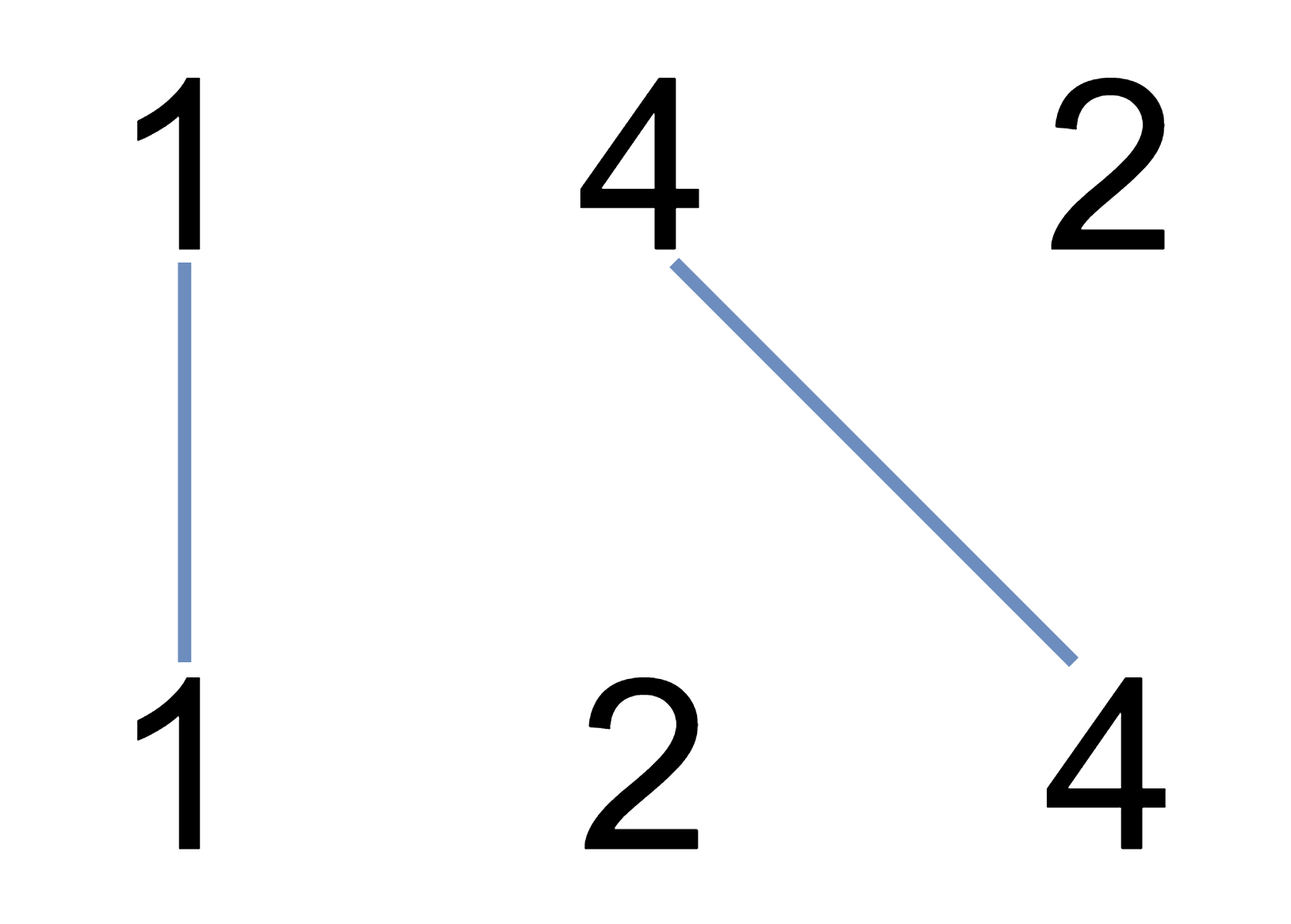Algorithm
Problem Name: 1035. Uncrossed Lines
You are given two integer arrays nums1 and nums2. We write the integers of nums1 and nums2 (in the order they are given) on two separate horizontal lines.
We may draw connecting lines: a straight line connecting two numbers nums1[i] and nums2[j] such that:
nums1[i] == nums2[j], and- the line we draw does not intersect any other connecting (non-horizontal) line.
Note that a connecting line cannot intersect even at the endpoints (i.e., each number can only belong to one connecting line).
Return the maximum number of connecting lines we can draw in this way.
Example 1:

Input: nums1 = [1,4,2], nums2 = [1,2,4] Output: 2 Explanation: We can draw 2 uncrossed lines as in the diagram. We cannot draw 3 uncrossed lines, because the line from nums1[1] = 4 to nums2[2] = 4 will intersect the line from nums1[2]=2 to nums2[1]=2.
Example 2:
Input: nums1 = [2,5,1,2,5], nums2 = [10,5,2,1,5,2] Output: 3
Example 3:
Input: nums1 = [1,3,7,1,7,5], nums2 = [1,9,2,5,1] Output: 2
Constraints:
1 <= nums1.length, nums2.length <= 5001 <= nums1[i], nums2[j] <= 2000
Code Examples
#1 Code Example with Java Programming
Code -
Java Programming
class Solution {
Integer[][] dp;
public int maxUncrossedLines(int[] A, int[] B) {
dp = new Integer[A.length][B.length];
return helper(A, 0, B, 0);
}
private int helper(int[] A, int idxA, int[] B, int idxB) {
if (idxA == A.length || idxB == B.length) {
return 0;
}
if (dp[idxA][idxB] != null) {
return dp[idxA][idxB];
}
if (A[idxA] == B[idxB]) {
dp[idxA][idxB] = 1 + helper(A, idxA + 1, B, idxB + 1);
}
else {
dp[idxA][idxB] = Math.max(helper(A, idxA + 1, B, idxB), helper(A, idxA, B, idxB + 1));
}
return dp[idxA][idxB];
}
}
Input
Output
#2 Code Example with Javascript Programming
Code -
Javascript Programming
const maxUncrossedLines = function(A, B) {
const lenA = A.length
const lenB = B.length
const dp = Array.from({length: lenA + 1}, () => new Array(lenB + 1).fill(0))
for(let i = 1; i < = lenA; i++) {
for(let j = 1; j < = lenB; j++) {
if(A[i - 1] === B[j - 1]) {
dp[i][j] = 1 + dp[i - 1][j - 1]
} else {
dp[i][j] = Math.max(dp[i - 1][j], dp[i][j - 1])
}
}
}
return dp[lenA][lenB]
};
Input
Output
#3 Code Example with Python Programming
Code -
Python Programming
class Solution:
def maxUncrossedLines(self, A: List[int], B: List[int]) -> int:
dp, m, n = collections.defaultdict(int), len(A), len(B)
for i in range(m):
for j in range(n):
dp[i, j] = max(dp[i - 1, j - 1] + (A[i] == B[j]), dp[i - 1, j], dp[i, j - 1])
return dp[m - 1, n - 1]
Input
Output
#4 Code Example with C# Programming
Code -
C# Programming
using System;
namespace LeetCode
{
public class _1035_UncrossedLines
{
public int MaxUncrossedLines(int[] A, int[] B)
{
var rows = A.Length;
var cols = B.Length;
var dp = new int[rows + 1, cols + 1];
for (int i = 1; i < = rows; i++)
for (int j = 1; j < = cols; j++)
{
if (A[i - 1] == B[j - 1])
dp[i, j] = dp[i - 1, j - 1] + 1;
else
dp[i, j] = Math.Max(dp[i - 1, j], dp[i, j - 1]);
}
return dp[rows, cols];
}
}
}
Input
Output
